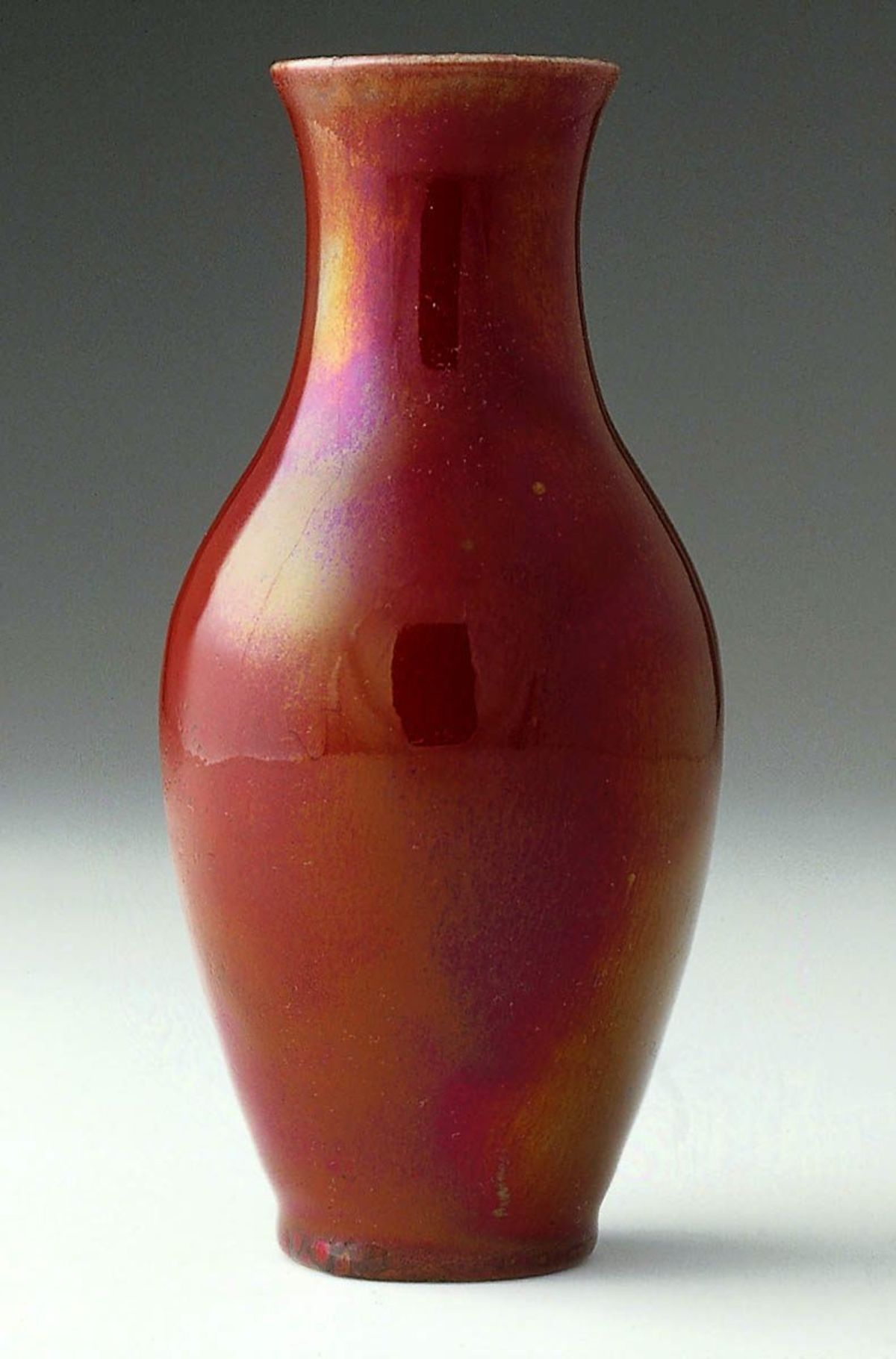Luster glaze
Description
Thin metallic films that produce an iridescent effect on ceramics or glass. Luster glazes have been used since the 9th century in the Middle East ceramics. Spanish and Italian majolica pottery was produced by a multistep technique in which the metallic glaze was applied over a fired glaze then the ceramic was refired to adhere the two layers. The thin metallic layer is obtained with either reducing salts or a reducing atmosphere. By the 19th century, a single step technique was developed in England that produced an overall luster glaze. Various colors were obtained using reducing salts of silver (yellow), bismuth (pearly effect), platinum (silvery), copper (gold or red), and gold (ruby red). Arabian lusters are obtained using silver sulfide, cinnabar, iron oxide, and alum.
Synonyms and Related Terms
metallic luster; Arabian luster; Spanish luster; lusterware; lustreware; majolica; lustre (Fr., Port.)
Physical and Chemical Properties
Typical iridescent colors include:
- early Spanish = gold to greenish; tarnished copper
- 17th c. Spanish = bright reddish copper
- 16th c. Italian = ruby-red; golden yellow
- late 18th c. Europe and England = silvery
Resources and Citations
- Robert Fournier, Illustrated Dictionary of Practical Pottery, Chilton Book Company, Radnor, PA, 1992
- Encyclopedia Britannica, http://www.britannica.com Comment: "lustreware." Accessed 1 Oct. 2004. (for time periods and colors)
- Materials & Techniques in the Decorative Arts, Lucy Trench (ed.), John Murray, London, 2000

